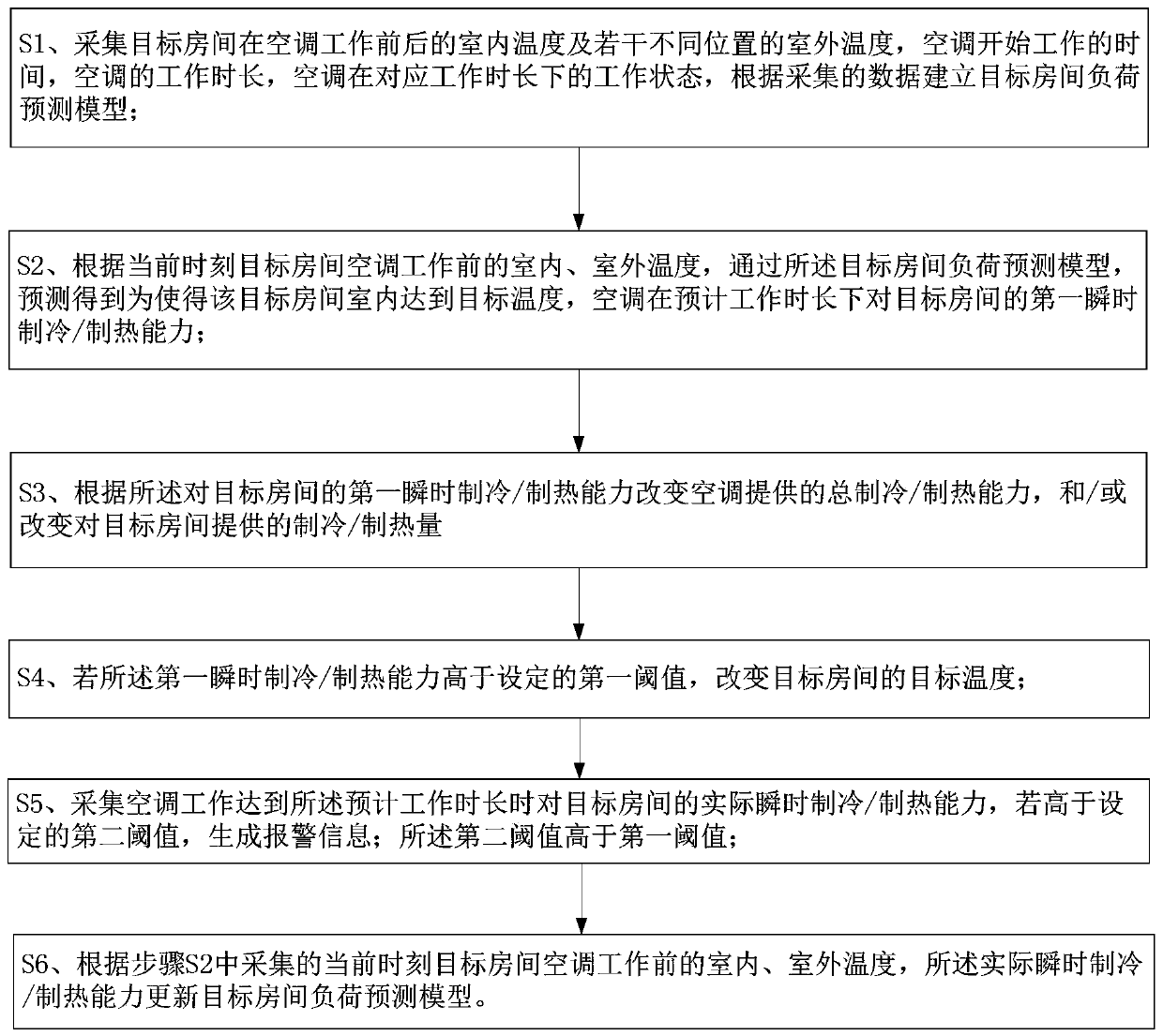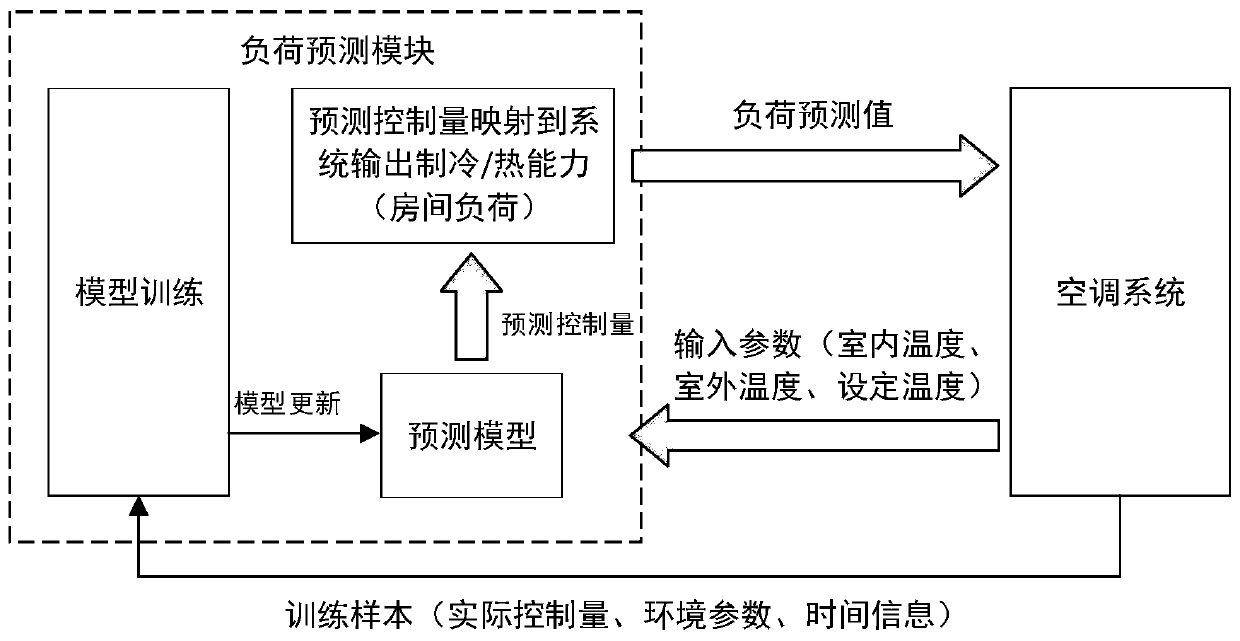Air conditioner control method and system based on target room load prediction
A target room, load forecasting technology, applied in heating and ventilation control systems, control inputs involving air characteristics, space heating and ventilation control inputs, etc., can solve problems such as unpredictable, difficult, indoor personnel and material cooling dynamics, etc.
- Summary
- Abstract
- Description
- Claims
- Application Information
AI Technical Summary
Problems solved by technology
Method used
Image
Examples
Embodiment 1
[0073] In this embodiment, a target room load prediction model based on a kNN (k-Nearest Neighbor, K-nearest neighbor) algorithm is used. In the first embodiment, the target room load prediction model is related to the start-up time of the air conditioner, and one start-up time corresponds to one target room load prediction model.
[0074] The advantage of this embodiment is that the amount of calculation required to establish and update the model is relatively small, which is conducive to the deployment of embedded systems with limited computing power in the air-conditioning system, and the solution does not require the cooperation of cloud servers, and the air-conditioning system can realize the establishment of the model locally and update.
[0075]In this embodiment, according to the indoor temperature of the target room before the air conditioner is turned on, an outdoor temperature, and the target temperature set by the user, the room load is predicted 3 hours and 10 hou...
Embodiment 2
[0094] In this embodiment, the outdoor temperature of a target room is collected. A linear model is used to predict the cooling capacity y output to the target room after the air conditioner works for 1 hour (that is, the predicted value of the target room load after 1 hour). In the embodiment, the target room load forecasting model is also related to the start-up time of the air conditioner, and one start-up time corresponds to one target room load forecasting model.
[0095] The advantage of this embodiment is that the amount of calculation required to establish and update the model is relatively small, which is conducive to the deployment of embedded systems with limited computing power in the air-conditioning system, and the solution does not require the cooperation of cloud servers, and the air-conditioning system can realize the establishment of the model locally and update.
[0096] Step 1. Collect the indoor temperature of the target room before the air conditioner is...
Embodiment 3
[0109] When using KNN and linear model to predict room load, only one target time can be fixed, for example, the start-up time described in Embodiments 1 and 2 is 1 / 3 / 10 hours.
[0110] In this embodiment, the target room load prediction model is established based on the fully connected neural network model, and the target time t tgt And environmental measurements are used as model input to increase the applicability of the model and the robustness to environmental changes.
[0111]The advantage of this embodiment is that the model is more adaptable to environmental changes. However, since the training and calculation of the neural network model need to consume more computing resources, and there are certain requirements for the numerical accuracy of the computing platform, unless the local deployment of the air conditioner has With a computing platform with strong computing power and high precision, the establishment and update of the neural network model usually requires the...
PUM
 Login to View More
Login to View More Abstract
Description
Claims
Application Information
 Login to View More
Login to View More - R&D
- Intellectual Property
- Life Sciences
- Materials
- Tech Scout
- Unparalleled Data Quality
- Higher Quality Content
- 60% Fewer Hallucinations
Browse by: Latest US Patents, China's latest patents, Technical Efficacy Thesaurus, Application Domain, Technology Topic, Popular Technical Reports.
© 2025 PatSnap. All rights reserved.Legal|Privacy policy|Modern Slavery Act Transparency Statement|Sitemap|About US| Contact US: help@patsnap.com



